Twenty Years – 4A Symposium
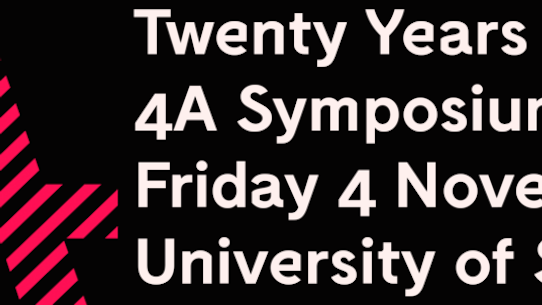
When
Thursday, 3 November 2016, 10:30pm
Location
The Foyer, Sydney Law School, University of Sydney
City Road, Camperdown, Sydney
TWENTY YEARS
On Friday 4 November, 4A Centre for Contemporary Asian Art together with The Power Institute, The University of Sydney will stage a major symposium event, Twenty Years, with support from the Power Institute, Sydney University, the Asian Australian Studies Research Network and the China Studies Centre.
This day-long symposium celebrated 4A’s twenty-year anniversary. Twenty Years brought together those who have played a role in the development of 4A as a leader in Asian contemporary art in Australia since 1996 and those that will shape the next twenty years. A keynote presentation by Sara Raza, Guggenheim UBS Map Curator, Middle East and North Africa, was followed by an in-conversation between Raza and Edmund Capon, OBE AM, Chair of 4A Centre for Contemporary Asian Art.
Twenty Years Symposium:
Friday 4 November, 2016.
9.30AM – 7.30PM
The Foyer, Sydney Law School, University of Sydney, City Road, Camperdown, Sydney.
Watch the Symposium sessions below, recorded by Matthew Venables and thanks to our wonderful partners at The Power Institute:
4A would like to thank the Power Institute, Sydney University, the Asian Australian Studies Research Network and the China Studies Centre, and, of course, all the wonderful speakers, attendees and staff who participated in this important event.
Twenty Years – Symposium Schedule
9.30 – 10.00 Registration
10.00 – 10.15 Welcome
| Prof. Mark LEDBURY, Director of the Power Institute
| Dr. Mikala TAI, Director of 4A Centre for Contemporary Asian Art
10.15 – 10.30 Opening Remarks
| Edmund CAPON, OBE AM, Chair of 4A Centre for Contemporary Asian Art
10.30 – 12.00 Session one – The Last Twenty
| Chair: Aaron SEETO
| Speakers: Lindy LEE, Prof. Ien ANG, Dacchi DANG and Victoria LOBREGAT.
Session supported by the China Studies Centre, The University of Sydney.
4A Centre for Contemporary Asian Art is a creation of the Asian Australian Artist’s Association that was founded in 1996 in the midst of socio-political debates about multiculturalism and Australian identity. This session brings together some of the early members of the organisation to reflect on the context that framed the inception of 4A.
12.00 – 1.00 Lunch
1.00 – 2.30 Session two – The Asian Australian Artist
| Chair: Prof. Jacqueline LO
| Speakers: Abdul ABDULLAH, Mayu KANAMORI, Owen LEONG and John YOUNG
Session convened with the Asian Australian Research Network.
Reflecting on 4A’s foundation as an artist association this session focuses on the cultural politics of Asian Australian art and identity from the perspective of artists. The artist panelists will all reflect on how their diverse histories inform their practice and politics.
2.30 – 3.15 Afternoon Tea & Launch of The 4A Papers
3.15 – 4.45 Session three – The Next Twenty
| Chair: Dr. Mikala TAI
| Speakers: Alex BOWEN, Pedro DE ALMEIDA, Dr. Abdullah M.I. SYED and Dr. Stephen WHITEMAN
Session convened and supported by the Power Institute, The University of Sydney
The next era for 4A will see expanded areas of focus, new questions and new challenges. This session brings together a diverse panel of 4A collaborators who are working with the organisation to navigate the future of one of Australia’s most unique and important contemporary art spaces.
4.45 – 5.00 Closing Remarks
| Dr Mikala TAI, Director of 4A Centre for Contemporary Asian Art
5.00 – 6.00 – Evening Break
Join us across the grass at Taste Baguette for a quick pre-keynote break. Nibbles provided!
6.00 – 7.30 Keynote
| Speaker: Sara RAZA
| In Conversation with: Edmund CAPON, OBE AM, Chair of 4A Centre for Contemporary Asian Art
Sara Raza will present a keynote on her curatorial research exploring questions concerning the critical role of curating and the importance of site specificity in new emerging centers in Central Asia, Caucasus and the Gulf. Correspondingly, Raza will highlight the global stage of the exhibition as a site where the cross circularity of several overlapping and urgent topics concerning the migration of people and ideas and the prohibition of civil liberties converge to create an urgent yet fluid forum for activating ideas through visual culture.
SPEAKERS
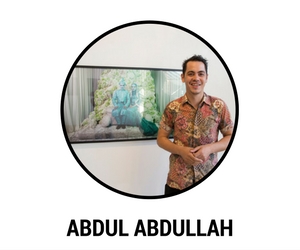
Abdul Abdullah is an artist from Perth, currently based in Sydney, who works across painting, photography, video, installation and performance. As a self described ‘outsider amongst outsiders’, his practice is primarily concerned with the experience of the ‘other’ in society. Abdullah’s projects have engaged with different marginalized minority groups and he is particularly interested in the experience of young Muslims in the contemporary multicultural Australian context. Through these processes and explorations Abdullah extrapolates this outlook to an examination of universal aspects of human nature.
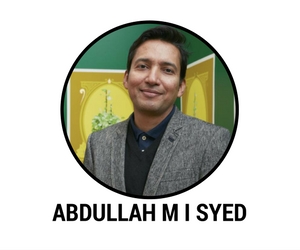
Artist Abdullah M.I. Syed was born in Karachi, Pakistan and presently works between Karachi and Sydney, Australia. Syed’s artwork utilizes a variety of mediums and techniques to communicate complex political ideas. This includes print screening and the shadow play produced with dollar bills and razorblades. His political commentary tackles controversial topics such as the War on Terror, immigration, and Western attitudes towards the East. He participated in the Britto artists’ workshop and an artist residency at Cicada Press. He has also co-curated exhibitions, notably Michael Esson: A Survey of Drawing, Michael Kempson: A Survey of Prints, Aboriginal Dreams and Let’s Draw the Line in Karachi, Pakistan. As a designer he co-coordinated the Design Department at the University of Karachi as well as lectured there and at UCO in the United States. He is currently completing his Ph. D at the College of Fine Arts in Sydney, Australia.
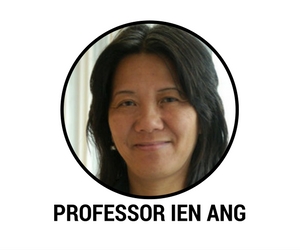
Distinguished Professor Ien Ang is a Professor of Cultural Studies and was the founding Director of the Institute for Culture and Society. She is one of the leaders in cultural studies worldwide, with interdisciplinary work spanning many areas of the humanities and social sciences. Her books, including Watching Dallas, Desperately seeking the audience and On not speaking Chinese, are recognised as classics in the field and her work has been translated into many languages, including Chinese, Japanese, Italian, Turkish, German, Korean, and Spanish. Her most recent book, co-edited with E Lally and K Anderson, is The art of engagement: culture, collaboration, innovation (University of Western Australia Press, 2011).
Her current ARC research project is entitled Sydney’s Chinatown in the Asian Century: from Ethnic Enclave to Global Hub (with Donald McNeill and Kay Anderson in collaboration with the City of Sydney). She currently chairs an Expert Working Group on Asia Literacy: Language and Beyond, for the Australian Council of Learned Academies’ Securing Australia’s Future program.
As a prominent public speaker and a Fellow of the Australian Academy of the Humanities, she is frequently called on for keynote addresses in Australia and internationally. As an ARC Professorial Fellow, Professor Ang aims to explore the theoretical and practical implications of notions of ‘cultural complexity’, in a research program entitled ‘Cultural Research for the 21st Century: Building Cultural Intelligence for a Complex World’. She is a champion of collaborative cultural research and has worked extensively with partner organisations such as the NSW Migration Heritage Centre, The Art Gallery of New South Wales, The Special Broadcasting Service and the Museum of Contemporary Art.
Professor Ang has had the title of Distinguished Professor conferred on her by Western Sydney University in recognition of her outstanding research record and eminence. She is the first person at the University to be conferred with this honour.
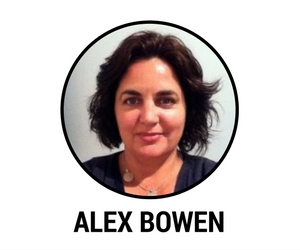
Alex Bowen heads up the cultural and creative programs at the City of Sydney, encompassing the city’s network of nine libraries, Customs House, Pine Street Creative Arts Centre, cultural development, business development and sponsorship, and major events including New Year’s Eve, Art & About and Lunar New Year celebrations.
Alex has over twenty-five years experience in the arts and cultural sector: including in State and Federal funding bodies, regional galleries, contemporary art spaces, festivals, as an educator and practitioner. Alex’s deep passion is being able to help artists, arts workers and arts organisations do what they do best in a global city.

Mr Capon took up his appointment as Director of the Art Gallery of New South Wales in November 1978 following his arrival from London where, for the previous five years, he held the position of Assistant Keeper, Far Eastern Section, Victoria and Albert Museum. He stepped down as director on 23 December 2011.
Mr Capon attained a Master of Philosophy Degree in Chinese Art and Archaeology (including language) from London University’s Department of Oriental and African Studies with his thesis entitled: The Inter-dependence of Chinese Buddhist Sculpture in Bronze and Stone from AD386 to 581, and is a recognised world expert in his particular field.
In October 2003 Mr Capon opened the Art Gallery of New South Wales’ newly rebuilt Asian galleries. This major building project has created two levels of greatly enhanced and expanded exhibition space for the Gallery’s Asian collection, as well as space for touring exhibitions of Asian art. In May 2011 Mr Capon opened 3,300 square metres of new and refurbished modern and contemporary galleries, which includes dedicated display space for the Kaldor Family Collection.
Mr Capon is a Visiting Professor in the School of Languages and Linguistics, Faculty of Arts and Sciences, University of New South Wales; is on the Board of the St James Ethics Committee; has written extensively on the arts of China; written and presented a 3-part ABC TV-China Central Television co-produced documentary entitled Meishu: Travels in Chinese Art which has been distributed worldwide; developed the AGNSW as a centre for Asian art display and education; created the Gallery’s highly successful Foundation, a Capital fund, to acquire works for the Collection; has curated exhibitions encompassing Asian, European and Australian art; has written extensively on Chinese art & archaeology and on the work of artists such as Jeffrey Smart, Caravaggio and Giacometti.
Mr Capon’s most recent non-Gallery publication is a collection of essays entitled I Blame Duchamp: My Life’s Adventures in Art which was published in November 2009 by Penguin Australia. He was awarded the Doctor of Letters honoris causa from the University of NSW in 2000 and from Macquarie University in 2010. He has been honoured by the governments of Britain, France, Italy and Australia for his contribution to art and culture.
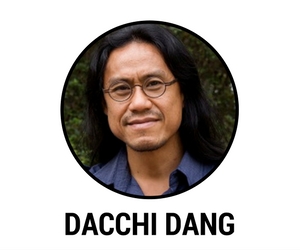
Dacchi Dang was born in 1966 in Saigon, Vietnam, and currently lives and works in Brisbane. His personal experience as a refugee generates difference in how he sees the multiple geographical and social landscapes of Australia and Vietnam. This provides new knowledge and understanding of the physical and cultural landscape of both countries. With this approach he creates or reinvents layered landscapes through his personal experiences and memories in order to focus his gaze and reflect on his ‘self’ in relation to the location of home.
Dang has a Graduate Certificate of Applied Science in Cultural Heritage Studies, University of Canberra (2003); an MA and BFA, College of Fine Arts, University of NSW (1996, 1991); and is currently a confirmed candidature of Doctor of Philosophy at the Queensland College of Arts, Griffith University.
Dang has exhibited his work since the early 1990s. Recent solo exhibitions includeLiminal, Centre for Contemporary Photography, Melbourne (2007) and Gallery 4A, Sydney (2006); The Boat, Gallery 4A, Sydney (2001); and Phantasmagorie, Phyllis Palmer Gallery, Melbourne (2001) and Horsham Regional Arts Gallery, Melbourne (2001). Recent group exhibitions include Hashi Hashi, The Galleria, Brisbane (2009);Planet Ueno, Taito Community Museum, Ueno, Tokyo, Japan (2008); Re-StArt, 733 Art Factory, Chengdu, China (2008); The Revenge of Genres: Contemporary Art from Australia, Cité International des Arts, Paris, France (2008) and Les Brasseurs, Liege, Belgium (2007); and News From Islands, Campbelltown Arts Centre, Sydney (2007).
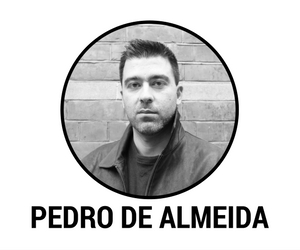
Pedro de Almeida is Sydney-based curator, programmer, arts manager and writer. Over the past decade he has developed and delivered artistic and cultural programs that have been distinguished by their engagement of culturally and socially diverse artists, communities and audiences. Since 2012 Pedro has been Program Manager at 4A Centre for Contemporary Asian Art, Sydney. Curatorial projects for 4A include Sea Pearl White Cloud 海珠白雲 (2016, co-curated with Anthony Yung), presented in collaboration with Observation Society, Guangzhou, and MASS GROUP INCIDENT (2015, co-curated with Toby Chapman and Aaron Seeto), a multi-stage program of exhibitions, performances and site-specific projects that explored ideas of collective action through the complex position of the individual in relation to the group. Pedro also curated Beijing Silvermine (2014), a presentation of French Beijing-based photography collector Thomas Sauvin’s archive of found 35mm snapshots that reveal an intimate perspective of the lives of ordinary Chinese in the decades following the Cultural Revolution, and Ways: Omar Chowdhury (2014). Independent curatorial projects include Ian North – Felicia: South Australia 1973-1978 (2013) for the Australian Centre for Photography, Sydney, with accompanying artist monograph; and EXCAVATION: The Armory Exhibition (2012), Sydney Olympic Park.
Pedro previously held the position of Program Coordinator at Campbelltown Arts Centre (2008-2011) in Sydney’s western suburbs where he worked across a multidisciplinary artistic program. This included the large-scale exhibitionsNgadhu, Ngulili, Ngeaninyagu: A Personal History of Aboriginal Art in the Premier State (2008, curated by Djon Mundine OAM) and Gallery A Sydney 1964-1983 (2009, curated by John Murphy), both with accompanying catalogues. He was Associate Curator and Project Manager of the major three-year project Edge of Elsewhere (2010-2012, curated by Thomas J. Berghuis, Lisa Havilah and Aaron Seeto), which commissioned artists from Australia, Asia and the Pacific—Newell Harry, Jun Nguyen-Hatsushiba, Shigeyuki Kihara and Young-Hae Chang Heavy Industries, among others—to produce new works in partnership with a diverse range of communities as part of the Sydney Festival. Other professional roles include developing public programs for Sydney Living Museums (2011-2012), and Publisher’s Assistant at Allen & Unwin (2006-2008), Australia’s largest independent publisher.
Pedro’s writing on art is published regularly and has appeared in ArtAsiaPacific, Art & Australia, Art Monthly Australasia, American Suburb X, Broadsheet Journal, Photofile and un Magazine among others. He has authored and contributed to several exhibition catalogues and artists’ monographs including, most recently, TV Moore: With Love & Squalor (2015). He is Editor of The 4A Papers, a newly established online platform for writing on contemporary art and culture in the Asia Pacific region, and is a member of Broadsheet Journal’s international Editorial Advisory Board (since 2016). Pedro graduated with a Bachelor of Visual Arts (Honours) from Sydney College of the Arts, University of Sydney (2003). In 2014 he undertook a secondment at Delfina Foundation, London, and is currently undertaking a Master of Philosophy at University of New South Wales Art & Design with research around the politics art and public housing.

Born in Tokyo, based in Sydney and often between places on planes, cars, foot, trains and subways.
Story telling is Mayu’s art and craft. She often work site specifically with communities, and collaborate with artists and creators from all genres. Mayu writes plays, blogs and poetry; creates installations, performances, documentaries and radio programs; produces art projects, oral history programs and seminars; facilitates community workshops and arts projects; takes photographs, makes video and audio installations; researches, interviews and assists others to tell their stories. She draws during my spare time.
Some of her activities include being a board member of The Koto Music Institute of Australia, on the management committee of Living with Our Dead, and a founding member of Nikkei Australia.
Mayu likes to expand her mind and horizons, swim, listen, play and laugh; endeavour to be receptive and open; listen mindfully and with humility; and would like to be of service for the betterment of humanity and for world peace.
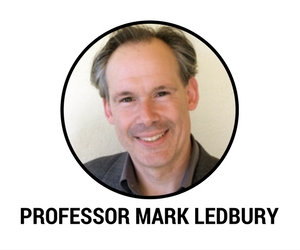
Professor Ledbury took his degrees at the University of Cambridge and the University of Sussex, and his first academic post was as lecturer in Cultural History at the University of Portsmouth. He then moved to the University of Manchester where he was lecturer in Art History, until he joined the Sterling and Francine Clark Art Institute in Massachusetts, in 2003. As Associate Director of the Research and Academic Program at the Clark, he oversaw the expansion of the research program’s ambition and reach. He devised, planned and ran workshops, conferences and partnerships and worked to develop and oversee a lively residential scholars’ program. As Director of the Power Institute, Professor Ledbury ensures that the Power furthers its research and public engagement mission through talks, conferences and the support of research and publications.
Professor Ledbury’s research interests are in the history of European art, particularly French Art, in the eighteenth and early nineteenth centuries, and he is specifically interested in the relationships between theatre and visual art and in concepts of genre in Enlightenment philosophy and aesthetics. He is committed to historically and archivally informed scholarship, has published widely on Boucher, Greuze, David, and on inter-arts networks and relationships.
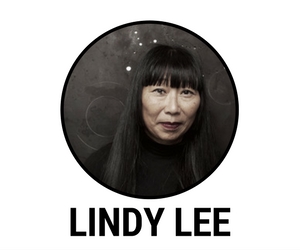
Lindy Lee is one of Australia’s foremost contemporary artists, with a career spanning three decades in Australia and internationally. Born in Brisbane, Lee’s works from the 1980s began an ongoing investigation into issues of selfhood, identity and authenticity via concepts of the copy and the original. Lee studied at The Chelsea School of Art, London in 1979–80, at SCA from 1981 to 1984 and later at UNSW. In 2001, a monograph on her work by Benjamin Gennochio and Melissa Chiu was published by Fine Arts Press and Craftsman House, Sydney. In 2008 Lee was the subject of an ABC TV documentary for the Artists at Work series.
Solo exhibitions include: Flowers Fall, 10 Chancery Lane, Hong Kong; Birth & Death, Artspace, Sydney; Narrow Road to the Interior, Atrium Space, MITA, Australian High Commission, Singapore; No Up, No Down, I am the Ten Thousand Things, AGNSW, Sydney. Group exhibitions include: Post Eden, Today Art Museum, Beijing 2010; Process/Journey, Australian Embasssy, Redgate Gallery, Beijing 2008; OPEN07, Venice, Italy 2007; Le Mois de la Photo à Montréal 2005: Image & Imagination, Montréal, Quebec, Canada 2005; Buddha: Radiant Awakening, AGBSW, Sydney 2002; Three Views of Emptiness: Buddhism and the art of Tim Johnson, Lindy Lee and Peter Tyndall, Monash University Museum of Art, Victoria 2001; Spirit + Place, MCA, Sydney 1997; and Photography is Dead, Long Live Photography, MCA, Sydney.
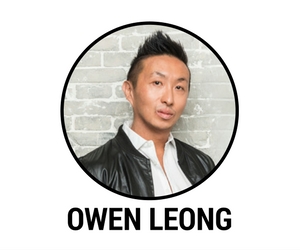
Owen Leong was born in Sydney. He is a contemporary artist exploring identity, abjection and transformation. Working with photography, video, and installation his art blurs the boundaries between real and fictional selves to explore how the body is physically, socially and culturally framed.
His artwork visualises the structures that mark our bodies through race, gender and colour. His artistic practice explores corporeal encoding and the disruption of hierarchical systems to elicit the diffuse, and often invisible, power of white hegemony in post-colonial Australia. His work evolves from the premise that identities are fluid and constantly changing, and uses the body and skin as a surface across which social and cultural forces are transmitted.
Owen Leong completed a Master of Fine Arts at College of Fine Arts UNSW in 2005, where he was the recipient of a prestigious Australian Postgraduate Award. He has exhibited widely in Australia and internationally. Recent solo exhibitions include Tidal Skin at Nellie Castan Gallery, Melbourne; Infiltrator at Grantpirrie Gallery, Sydney; and White Amnesia at Sherman Galleries, Sydney.
His work has been included in major international group exhibitions including the Liverpool Biennial Independents, Liverpool; Magic Spaces at Today Art Museum, Beijing; Soft Power at Zendai Museum of Modern Art, Shanghai; and Asian Attitude: Transit Forces at the National Museum of Poznan, Poland.
Leong was awarded the Visual Arts Centre Facade Project Public Art Commission by La Trobe University and the City of Greater Bendigo in 2012. He received the people’s choice award in the prestigious Bowness Photography Prize in 2009. A three-time finalist in the Helen Lemprière Traveling Art Scholarship, he has been the recipient of numerous awards and grants from the Australia Council for the Arts, Ian Potter Cultural Trust, Art Gallery of NSW and Asialink. He has held residencies at Artspace, Sydney; Chinese Arts Centre, Manchester; Cité Internationale des Arts, Paris; and Tokyo Wonder Site, Japan. Leong’s work is held in numerous private collections across Australia, New Zealand, and the United Kingdom.

Professor Jacqueline Lo is Associate Dean (International) for the ANU College of Arts and Social Sciences and Executive Director of the Australian National University’s Centre for European Studies. She is also the Chair of Academic Board (2016-2018).
Jacqueline is an Adjunct Research Fellow of the Centre for Interweaving Performance Cultures at the Free University of Berlin. Her research focuses on issues of race, colonialism, diaspora and the interaction of cultures and communities across ethnic, national and regional borders. Publications include Staging Nation(HKUP 2002), Performance and Cosmopolitics (Palgrave Macmillan 2007, with Helen Gilbert). Her latest publications include editing a special issue of the Asia Europe Journal (2014) and contributing to a volume of essays on the concept of empathy and memory studies (2016).
Jacqueline has considerable experience in the areas of education and cultural policy, cultural diplomacy and management in the tertiary sector. She is presently serving on the reference group for the ACT Arts Framework Policy Review and regularly conducts briefings for govenrment and the diplomatic corps. She has been Visiting Fellow at UCLA, NYU, the Free University of Berlin and Konstanz University, and DAAD Guest Professor at the University of Cologne. She is the Founding Chair of the Asian Australian Studies Research Network and a member of the NYU Global Arts Exchange Program. She was awarded the Chevalier Ordre des Palmes Académiques in 2014.

Victoria continues to draw inspiration from uniquely Australian sunlight, mid-century houses and a sense of place.
Her latest painted work renders sometimes minutely observed gardens and vistas beyond the outskirts of the city. Most of the houses she renders are from regional locations which are only now reacting to the pressure of expansion which radiates from heavily populated urban areas. One of Victoria’s chief aims is to document the passing of a distinctive era, a pre-digital age, (which is done by a diary of photographs over 25 years) and to record that transition in her work.
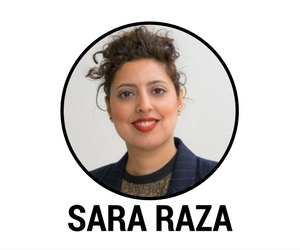
Guggenheim UBS MAP Curator, Middle East and North Africa
Sara Raza was selected by a committee of esteemed experts in the region as Guggenheim UBS MAP Curator, Middle East and North Africa. As a part of her two-year residency at the Guggenheim in New York, Raza is curating the third phase of the Guggenheim UBS MAP Global Art Initiative.
Born in London in 1979, Raza earned a BA in English Literature and History of Art and an MA in Art History and Theory, both from Goldsmiths College, University of London. She also pursued studies towards her Ph.D. at the Royal College of Art.
Raza has curated exhibitions and projects for several international biennials and festivals, including the Tashkent Biennial: Quotations from Daily Life, Art Gallery of Uzbekistan (2011); Rhizoma (generation in waiting), Collateral Event, Venice Biennale (2013); and Baku Public Art Festival: A Drop of Sky, Yarat Contemporary Art Space, Baku, Azerbaijan (2015). She also co-curated the Bishkek International: In the Shadow of Fallen Heroes at the Bishkek Historical Museum and Alto Square, Bishkek, Kyrgyzstan, in 2005.
In 2008, Raza curated the group exhibitions Cult of Personality and New Image Making, which featured projects by artists including Yael Bartana, Ergin Çavuşoğlu, and Erbossyn Meldibekov, for ShContemporary, Shanghai. She has organized a number of exhibitions for Maraya Art Centre, Sharjah, United Arab Emirates, including solo presentations of the work of Adel Abidin, Wafaa Bilal, and Mohamed Kazem, and the group exhibitions Migrasophia (migration + philosophy) (2012) and The Beginning of Thinking is Geometric(2013). She co-curated Shezad Dawood’s North American debut at the Plug In ICA, Winnipeg, Canada, in 2010, and organized Ergin Cavusoglu’s UAE debut at The Pavilion Downtown, Dubai, in 2011.
Raza has lectured and participated in panels at Zentrum für Kunst und Medientechnologie Karlsruhe, Germany (2004); Brown University, Providence, Rhode Island; San Jose State University; and Bishkek Historical Museum, Kyrgyzstan (all 2005); Queen Mary University and Westminster University (both London, 2006); Sharjah Biennial, United Arab Emirates (2009); Intelligence Squared, United Kingdom, London (2010); the State Museum of History of Uzbekistan, Tashkent, Uzbekistan (both 2011); Sotheby’s Institute of Art, London (2011–13); Institute of Contemporary Arts, London (2012); Institut du Monde Arabe, Paris, and American University of Sharjah (both 2013); Casa Árabe, Madrid (2014); Davis Museum at Wellesley College, Boston; and Museum of Fine Arts, Houston (both 2015).
Formerly, Raza was the head of education at Yarat Contemporary Art Space, Baku, Azerbaijan, founding head of curatorial programs at Alaan Art Space, Riyadh, Saudi Arabia, and curator of public programs at Tate Modern, London (2006–8). She was an educational advisor to Edge of Arabia’s CULTURUNNERS US tour (2013–14) and a jury member for the 2014 Akbank Contemporary Artists Prize, for which she also curated the shortlist exhibition (2014). She was a nominator for the Jameel Prize of the Victoria and Albert Museum (2012 and 2015) and Future Generation Art Prize of the Victor Pinchuk Foundation (2014). She was the winner of the United Kingdom Arts Council’s Emerging Curator’s Award at the South London Gallery (2004), and a finalist for the Walter Hopps Award for Curatorial Achievement (2015).
Sara Raza writes for numerous art publications and is the West and Central Asia desk editor of ArtAsiaPacific. She is the author of Punk Orientalism: Central Asia’s Contemporary Art Revolution, which will be published in winter 2016 by Black Dog Publishing, London.
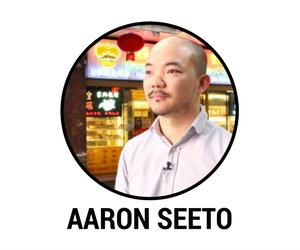
Aaron Seeto is Curatorial Manager, Asian and Pacific Art at the Queensland Art Gallery | Gallery of Modern Art. He was formerly Director of 4A Centre for Contemporary Asian Art, Sydney, a non-profit art organisation with a long established reputation for supporting Asian and Australian cultural dialogue. Aaron’s curatorial work revolves around the Asia-Pacific region and the impact and experience of migration and globalisation on contemporary art practice, working with artists to create projects that approach migrant and diasporic communities in critical ways.
He was on the curatorial team that delivered the Eighth Asia Pacific Triennial of Contemporary Art (APT8) in 2015. Recent curated projects include Yangjiang Group – Actions for Tomorrow (2015, 4A Centre for Contemporary Asian Art and offsite venues); Edge of Elsewhere (as co-curator 2010-2012 , Campbelltown Art Centre and 4A Centre for Contemporary Asian Art); and News from Islands (2007, Campbelltown Arts Centre), a survey of contemporary practice from Asia and the Pacific. He has also assisted in bringing major exhibitions of key artists to Australia including He Xiangyu, Araya Rasdjarmrearnsook and Song Dong among others.
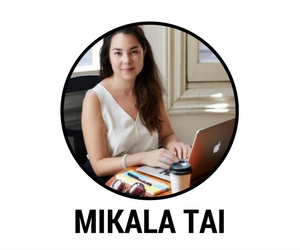
Mikala is a curator, researcher and academic specialising in contemporary Asian art and Australian design, who over the past decade has collaborated with local, national and international organisations to strengthen ties between Australia and Asia. Curatorial projects include Closing The Gap: Contemporary Indonesian Art (2011) at Melbourne International Fine Art (MIFA) when she was director; Yang Yongliang (2009) at 45 Downstairs, Melbourne; public programs for Swimming in Sand; Growing Rice under an Umbrella (2014) at No Vacancy Gallery, Melbourne; project managing Common Threads (2015), a project initiated by the Council of Textile and Fashion Industries of Australia (TFIA) to strengthen the relationship between Australian fashion and textiles and Hong Kong; and leading VIP Tours to Art Basel Hong Kong, Art Dubai and Sharjah Biennale.
As an academic Mikala has taught at both RMIT and the University of Melbourne in both undergraduate and graduate programs in Contemporary Art, Modernism and Exhibition Management, in addition to having devised and delivered the inaugural Contemporary Asian Art syllabus at RMIT (2012 – ) and the first China Fieldwork Course (2015 – )with Rebecca Coates and Kate McNeill at the University of Melbourne. More recently Mikala was the founder and director of Supergraph – Australia’s Contemporary Graphic Art Fair, which has been held twice at the Royal Exhibition Building in Melbourne and exhibited at Somerset House, London (2015). She was also part of the public programs team for Melbourne Now (2013) at the National Gallery of Victoria, and previously the Cultural Program Manager for the Melbourne Fashion Festival (2009-2013). Mikala currently sits on the board of BUS Projects, Melbourne. In 2006 Mikala completed her Bachelor of Arts (Honours) at the University of Melbourne and in early 2015 submitted her PhD at UNSW Art & Design examining the influence of the Global City on China’s local art infrastructure.

Stephen Whiteman holds degrees in art history and East Asian Studies from Brown University, where he earned his AB, and Stanford University, from which he received his MA and PhD. Before joining the faculty at The University of Sydney, Stephen taught art and architectural history of Asia at the University of Pennsylvania, Middlebury College and the University of Colorado. He has been a research fellow in Garden and Landscape Studies at Dumbarton Oaks in Washington, DC, and was most recently the A. W. Mellon Postdoctoral Fellow at the Center for Advanced Study in the Visual Arts at the National Gallery of Art, also in Washington. His research has also received support from the Graham Foundation for Advanced Study in the Fine Arts and the Chiang-ching Kuo Foundation for International Scholarly Exchange.
His current research focuses on the visual culture and built environment of the Qing imperial court during the early 18th century, with a particular interest in the role of gardens and landscape in imperial discourse. Stephen’s teaching, which ranges from surveys of Chinese art and East Asian architecture to the diverse artistic production of modern and contemporary Asia, emphasises close engagement with objects, including frequent visits to exhibitions and museum storage, as well as exhibition and research-based courses.
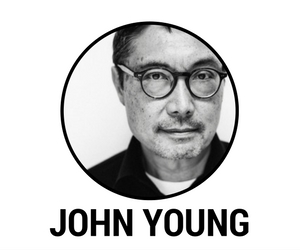
John Young Zerunge was born in Hong Kong in 1956 and moved to Australia in 1967. He read philosophy of science and aesthetics at the University of Sydney and then studied painting and sculpture at Sydney College of the Arts, specifically with the conceptual artist Imants Tillers and musical prodigy (the late) David Ahern. His investigation of Western late modernism prompted significant phases of work from a bi-cultural viewpoint, including series of paintings in the last four decades – the Silhouette Paintings, The Polychrome Paintings, the Double Ground Paintings and the Abstract Paintings.
Recently Young’s work has focused on transcultural humanitarianism with two projects entitled Bonhoeffer in Harlem and Safety Zone. Bonhoeffer in Harlem, a tribute to Dietrich Bonhoeffer, was installed at St. Matthaus Church, Kulturforum in Berlin in 2009, whilst Safety Zone, a tribute to 21 foreigners who saved the lives of 300,000 citizens during the ‘Rape of Nanjing’ in 1937, was shown at Anna Schwartz Gallery, Melbourne in 2010 and at the University of Queensland Art Museum in 2011.
Since his first exhibition in 1979, Young has had more than 60 solo exhibitions and over 160 group exhibitions. One of his first major projects was held at the Institute of Modern Art, Brisbane, in 1984. His works have been shown in major exhibitions both in Australia and abroad, including at the Solomon R. Guggenheim Museum, New York. He has devoted a large part of his four-decade career towards regional development in Asia, and has participated in many regional group travelling exhibitions including Asialink’s Art from Australia: Eight Contemporary Views, (1991, South East Asian Museums), Transcultural Painting (1994-5, Taiwan, China, Hong Kong), AGWA’s Confess and Conceal (1993, all South East Asian Museums), as well as Systems End (1996, Japan and Korea) and The Rose Crossing (1999-2001, Singapore, Hong Kong, Australia). He was also seminal in establishing in 1995 the Asian Australian Artists’ Association (Gallery 4A), now the 4A Centre for Contemporary Asian Art, a centre for the promotion of Asian philanthropy and the nurturing of Australasian artists and curators. Young has regular solo exhibitions in Melbourne, Sydney and Brisbane, Australia, and also shows in Berlin, Beijing and Hong Kong.
In 2005-06, a survey exhibition covering 27 years of works was held at the TarraWarra Museum of Art, Victoria, curated by Maudie Palmer and a monograph by Carolyn Barnes was published by Craftsman House, Thames and Hudson to coincide with this show. A second survey covering works from 2006-2012 was exhibited in February-March 2013 at Drill Hall Gallery, Australian National University, Canberra. Young currently resides in Melbourne with his partner Kate Mizrahi and children Jasper and Charlotte-Persia.
